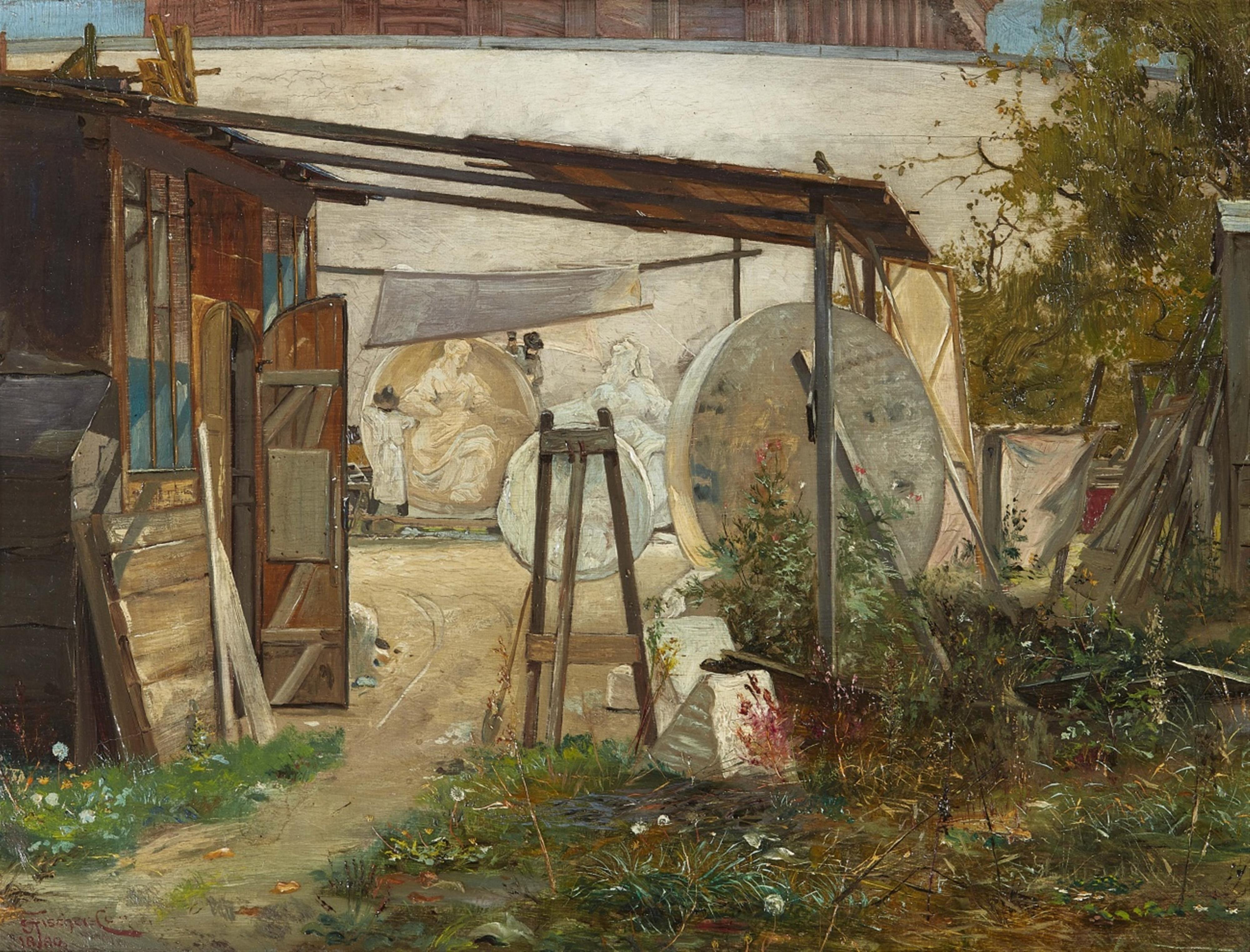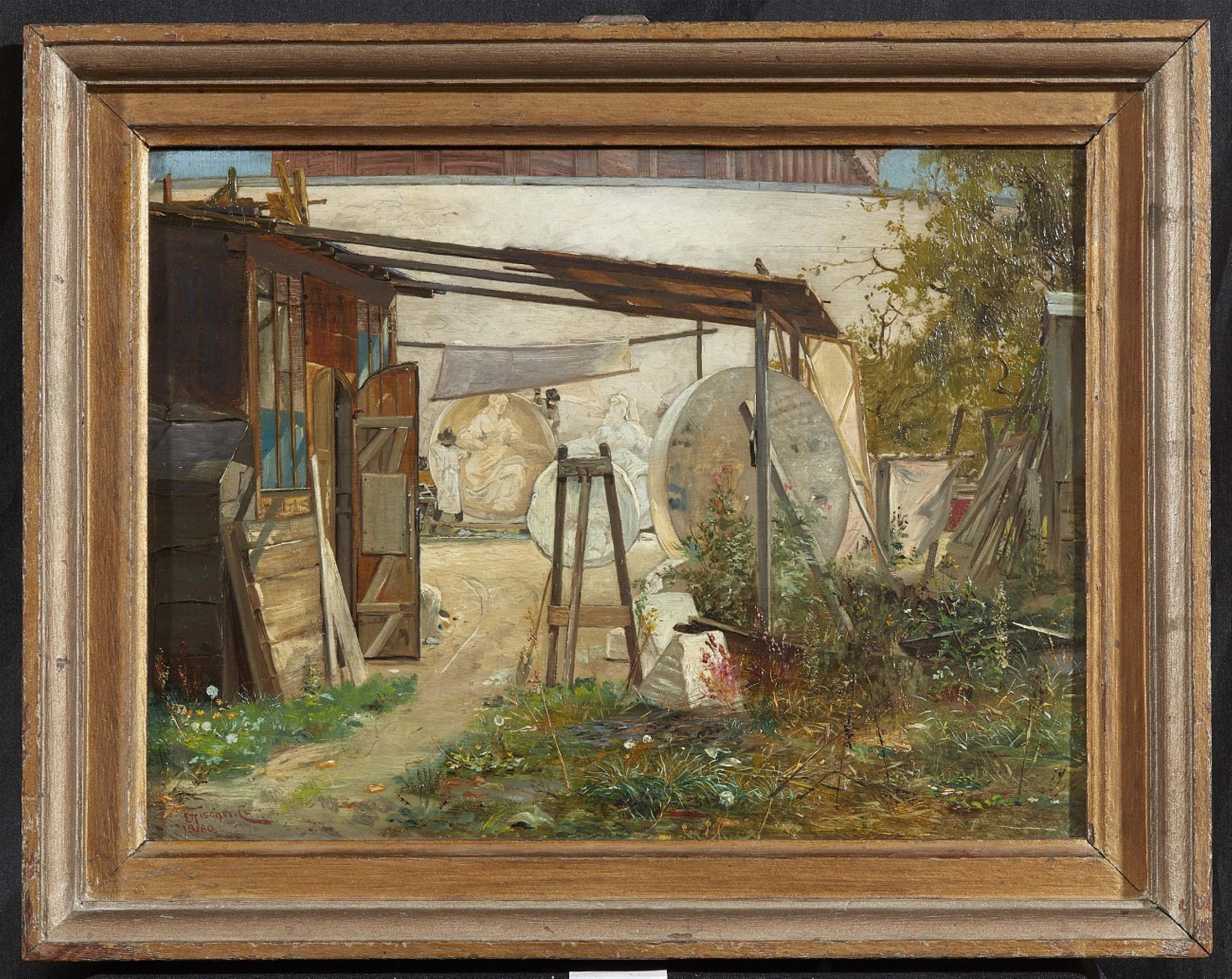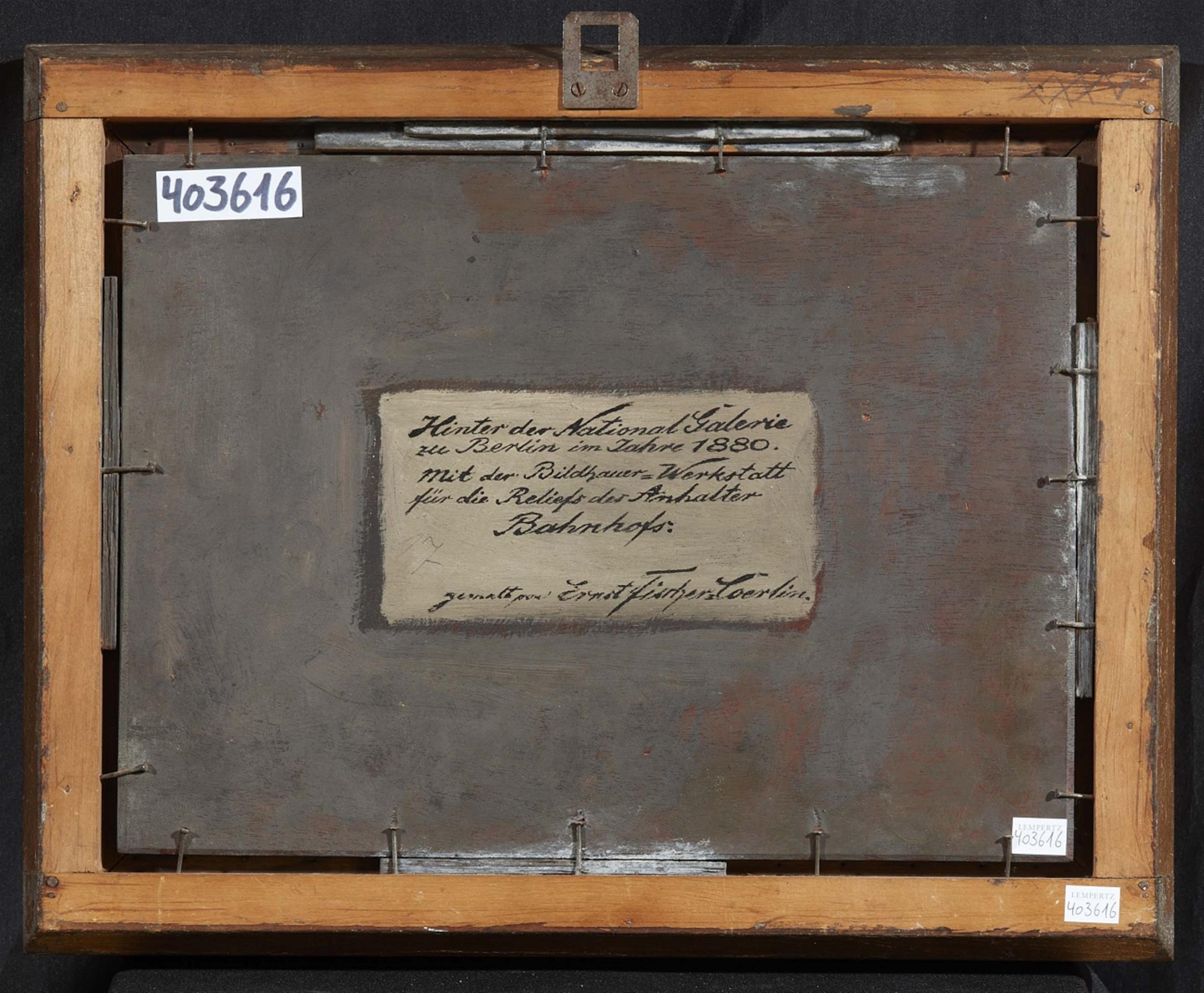Ernst Albert Fischer-Cörlin
Behind the National Gallery in Berlin in 1880
Oil on panel.. 23.5 x 32 cm..
Inscribed on the verso of the panel: "Hinter der National Galerie / zu Berlin im Jahre 1880. / Mit der Bildhauer=Werkstatt / für die Reliefs des Anhalter / Bahnhofs: / gemalt von Ernst Fischer=Coerlin."
This painting shows a sculptor's workshop located in the open air behind the National Gallery, where the reliefs for the façade of the Anhalter Bahnhof were created. The representative new station building was constructed between 1875 and 1880 according to plans by the Cologne-born architect Franz Schwechten, who would later also design Berlin's Kaiser Wilhelm Memorial Church. Due to war damage and partial demolition between 1959 and 1962, only the portico and parts of the vestibule gable remain from the brick building of the Anhalter Bahnhof. The corners of the richly decorated vestibule gable were originally decorated with two relief tondi with allegorical representations of architecture and engineering. These two tondi, designed by Otto Geyer, can be seen in the present painting by Ernst Albert Fischer-Cörlin, one from the front, the other from the back. With this painting, Fischer-Cörlin, who was a master student and probably also a co-worker of Anton von Werner for six years, has left us a valuable testimony to an important Berlin building that, save for a few remains, is now entirely lost.






